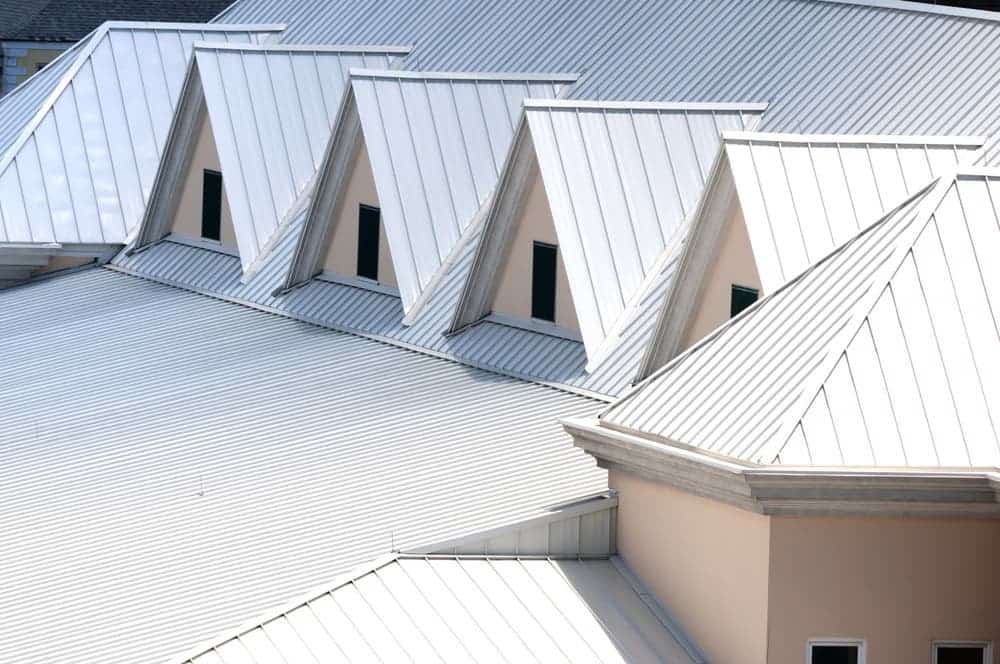As global heating continues to take its toll, one of its more direct consequences has been the longer and more intense heatwaves across the globe and its health consequences. Looking for palliatives, researchers have highlighted the potential of so-called cool roofs in California — one of the areas that’s more vulnerable to urban heatwaves.

The study, carried out by researchers at the Department of Energy’s Lawrence Berkeley National Laboratory, showed that if every building in California sported “cool” roofs by 2050, these roofs would help contribute to protecting people from the consequences of heatwaves.
A cool roof is a roof designed to reflect more sunlight and thus, absorb less heat than a standard roof. They can be made of highly reflective tiles or shingles or be coated in a highly reflective type of paint. Nearly any type of building can benefit from a cool roof, the EPA says.
Researchers estimate heatwaves are likely to become two to 10 times more frequent across the state by mid-century — but if cool roofs were adopted throughout California’s most populous areas by 2050, they would bring heatwave exposures by 35 million, compared to an estimated 80 million cases in 2050 with no increase in cool roofs.
“Urban spaces are a small fraction of the globe, but they are where most people live,” said Pouya Vahmani, a postdoctoral research fellow in Berkeley Lab’s Climate and Ecosystem Sciences Division and lead author of the study. “If we’re able to cool those areas even a little bit, it can have a huge impact on health and roll back significant impacts of climate change.”
The study wanted to predict heat wave occurrences across California’s 29 major urban counties between now and 2050. They used regional climate conditions between 2001 and 2015 as a starting point to simulate mid-century climate under two global warming scenarios.
They combined the climate conditions with high-resolution satellite images, which allowed them to incorporate urban features like buildings, which absorb and release heat. Then, the researchers used county-level population estimates for 2050 to assess population exposure to future heat waves.
“We wanted to gain a better picture of future climate change risks for California’s urban environments and adaptation options,” said Andrew Jones, a scientist in Berkeley Lab’s Climate and Ecosystem Sciences Division and co-author of the study. “Making such refined and realistic predictions can help urban planners and citizens prepare for heat events in an increasingly warming future.”
The study found that heatwaves with air temperatures exceeding 35 degrees Celsius (95 degrees Fahrenheit) and lasting at least three consecutive days become two to 10 times more frequent under future global warming scenarios. With the added burden of urban centers getting more populous, the researchers expect that by 2050 there will be 80 million heatwave exposure cases in California each year, compared to an average of 37 million cases annually under current climate conditions.
Following this finding, the study looked at the effectiveness of cool roofs in mitigating heatwave impacts. They repeated the same high-resolution regional climate simulations, only this time replacing all existing building roofs with cool roofs.
They found that if every building in California sported cool roofs by 2050, it could bring down the annual number of heatwave exposures in California to 45 million, from 80 million. This mitigation potential surprised even the research team, which wasn’t expecting such strong results.
Nevertheless, the 100% conversion to cool roofs by 2050 will be very challenging. While cities like Los Angeles mandate cool roofs for new constructions, retrofitting existing buildings will also be expensive.
At the same time, the positive effect of cool roofs will be limited to reducing day time temperatures when the roofs reflect sunlight. At night, when roads and packed buildings slowly release heat, these roofs aren’t capable of directly providing cooling benefits.









